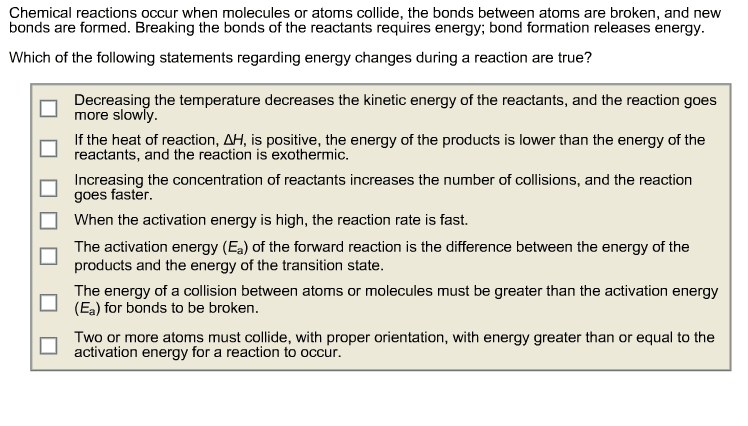CHEM10006 Lecture Notes - Lecture 8: Chemical Kinetics, Elementary Reaction, Collision Frequency
Document Summary
The rate of a reaction is proportional to the number of effective collisions per second among the reactant molecules. A higher concentration means there are more molecules of substance able to react, increasing the number of successful collisions and hence the rate of reaction. Molecules must be orientated correctly when they collide with sufficient energy in order for a reaction to occur. The arra(cid:374)ge(cid:373)e(cid:374)t fou(cid:374)d o(cid:374) the top of the pote(cid:374)tial (cid:858)hill(cid:859) is the tra(cid:374)sitio(cid:374) state. At this point the reaction could go forwards or backwards. Once the transition state is reached, the reaction can either proceed to give products or, in the reverse direction, to give reactants. The rate of a reaction is determined by the height of the activation barrier, ea. The rate of a reaction increases with increasing temperature. The kinetic energy of a system increases with temperature.



